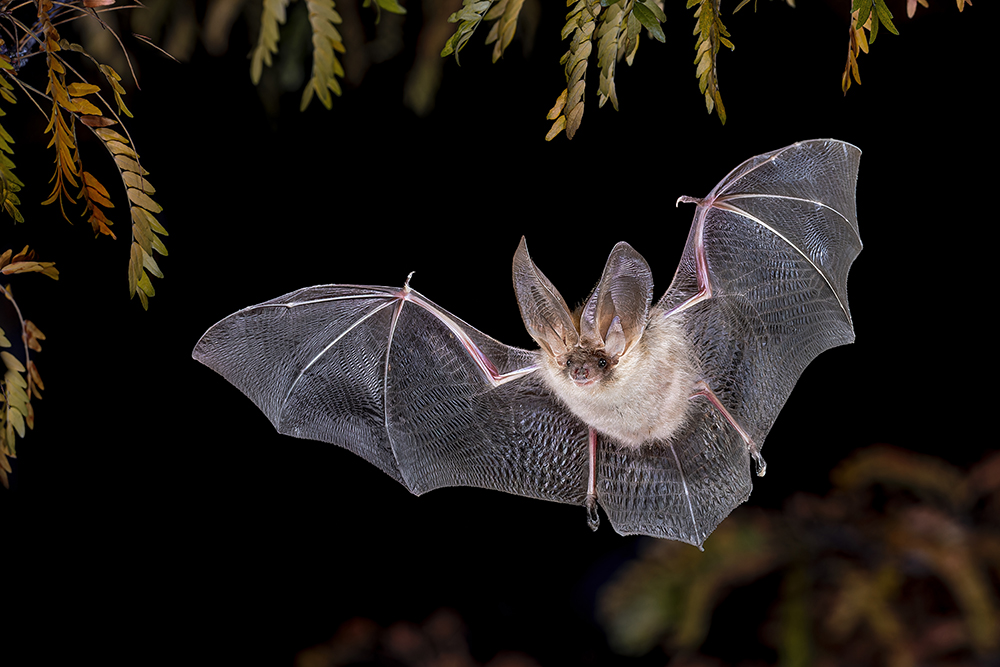
Perhaps it is not surprising that bats, which sleep by day, feed by night and swoop through the darkness as erratically as moths, are among the least understood group of mammals. Yet one of the most poorly appreciated facts about them is their global success. They have a near universal presence across six continents and are amazingly diverse, with 1,500 species, representing almost a quarter of all mammals.
We can blame our negative attitude towards them on a certain Victorian novelist. The representative of a British environmental group once recalled how they frequently received questions such as: ‘Do all bats drink blood?’ Here, fortunately, is the book to counter Dracula and to present us with a perfect PR campaign for bats. Not only does Yossi Yovel steep us in facts, he opens our hearts to their remarkable lives with his sense of excitement and wonder.
No aspect of bats is more awe-inducing than the way they navigate at night. Echolocation was named by the American scientist Donald Griffin in the 1930s, although Yovel omits even the briefest shout-out for a remarkable Italian Jesuit, Lazzaro Spallanzani, who observed the phenomenon in the 18th century, albeit without being able to account for it properly.
What Griffin proved was the way the animals fire out repeated high-frequency noises whose rebounding echoes are then processed in the chiropteran brain to sculpt their surroundings in sound. Yovel explains that bat calls are so loud they would damage human hearing if it were not for their frequency being almost entirely beyond our range. Griffin tested bats by stringing his lab with wires and found that they were able to swoop comfortably through a lace-like mesh just a tenth of a millimetre thick. When he revealed his findings, the audience was incredulous. One member seized Griffin’s colleague and shook him, crying: ‘You can’t really mean that!’
If anything, the researches of subsequent specialists are even more impressive – for example concerning the greater horseshoe bat, one of the 19 family members to be found in Britain. The ‘horseshoe’ refers to its weird nose shape, through which it sends a beam of sound that not only has great penetrative power but also the most precise frequency of any noise known in nature. Horseshoe bats, Yoval explains, ‘in effect see with their nostrils’.
Such gifts give bats laser-like abilities to detect the slightest fluttering of moth wings; but Yovel’s additional stories show how the real genius isn’t owned by any one organism. It is operational in life itself. In response to bats’ powers, some of their insect prey have acquired ears located on their wings. If they pick up bat noise, the insects either fly in ways that avoid capture or they emit their own sounds, effectively jamming the pursuer’s echolocation system. Another deterrent is to produce noise that advertises their toxicity.
Their weird nose shape enables horseshoe bats to ‘see’ with their nostrils
Vampire bats are also very strange. Because of the high failure rate entailed in their nocturnal excursions in search of blood, these animals have evolved behaviour by which a well-fed individual will often give a meal to unsuccessful neighbours. And the recipients are seldom relatives. In effect, vampires operate a form of social foodbank.
Another interesting strand involves sex. The female greater short-nosed bat will perform fellatio on her partner even as she is being fertilised. Her gymnastic feat apparently increases mating duration, suggesting that pleasure is a major factor in their coupling. Indian flying foxes, on the other hand, enjoy cunnilingus. The dominant male greater sac-winged bat, found in Central and South America, presides over a harem – although this must be the loosest definition of the word. His sex appeal relies partly on a sac beneath his wings, where he gathers bodily secretions, irrigated further with copious urine. He then works upon it as part of a grooming ritual called ‘perfume blending’ and wafts it over his females as he hovers before them singing. The smell is apparently not always unpleasant to humans. But can we infer what female bats make of it from the fact that they routinely mate with other males, while the paternity rate of the harem master is about a third of the offspring?







Comments